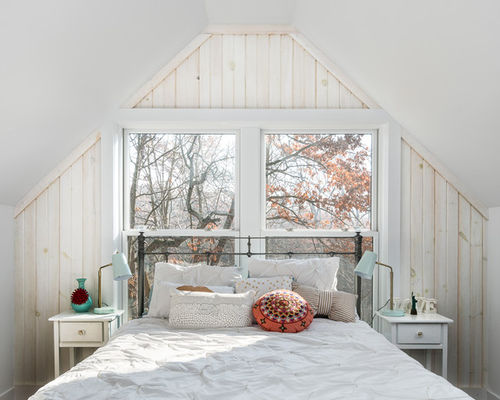Whitewash paint is often associated with Shabby Chic style, but it can be used quite successfully with a variety of decorating styles. It’s great for wood lovers who want to brighten up a room, since the technique lightens wood while allowing the natural grain to show through. Whitewash can add rustic charm and interesting texture to furniture, walls, ceilings and cabinets.
Read below to learn how to make your own whitewash paint, or scroll down to view options on purchasing ready made whitewash paint.
How to Make Your Own Whitewash
Making whitewash is simple and inexpensive. Simply mix white water-based paint with water to the desired consistency. A 1:3 paint-to-water ratio will give a thin, translucent coating that doesn’t need to be wiped or dry brushed. A 1:1 ratio will give a thicker coating that can be wiped or sanded for a distressed look. Use a glaze or sealer to add depth and durability to the finish.
Read on for six ways you might consider using whitewash in your home, plus a guide to different finishes.
1. Create an eco-friendly statement, farmhouse-style.
Whitewash can brighten dark materials and unify a space. It’s well suited to using reclaimed materials for a rustic, farmhouse look. A pickled whitewash finish can help paneled wood walls and ceilings make a statement without overpowering the space. Before you tear down paneling or remove ugly cabinets, consider a coat of whitewash. Want to see a Farmhouse style kitchen? Check it out here.
2. Introduce warm texture, Scandinavian-modern-style.
Whitewash is a great way to introduce the warmth of wood without the color. Similar to a stain, whitewash lets the grain and warmth of wood show through. The result is a warm gray color that looks great in any modern home. A pickling stain works best on new materials and gives a rustic look.
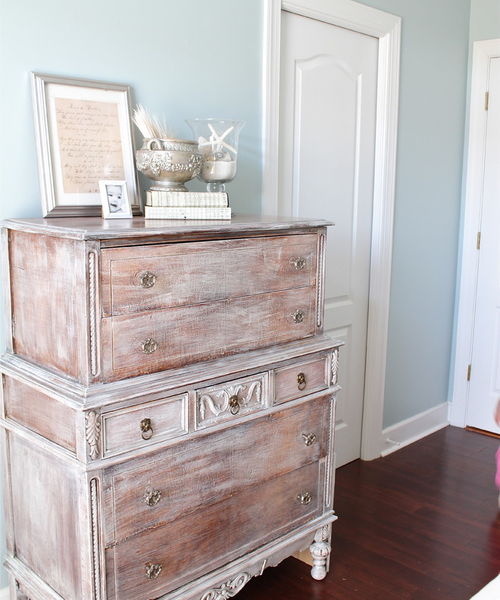
3. Reinvent a vintage piece, beach-house-style.
Whitewash can transform wood furniture by brightening the color while keeping the details. The distressed patina gives furniture a classic and comfortable look. This is a great way to transform older formal furniture to go with a beachy look. Consider dry brushing the whitewash to allow more of the wood color to show through.
4. Update wood paneling and logs, transitional-style.
We’ve all seen glamorous lofts with exposed brick walls. Whitewash can give that distressed feel to wood paneling or even log walls. Using this technique on all the walls and ceilings provides a fresh feel with loads of texture. Instead of bright colors, introduce additional texture and wood tones with the furniture for a sleek, transitional look. For a more rustic look, use a thicker whitewash and sand it away after it dries.
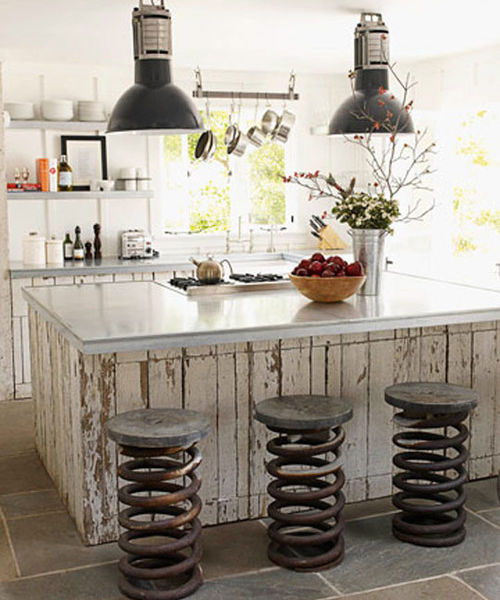
5. Give charm and character to reclaimed wood, industrial-style.
Reclaimed wood looks great with industrial style, but grays and browns can get dark and heavy. Whitewashing reclaimed wood is a great way to brighten an industrial space, a piece of furniture or even cabinetry. Whitewash allows you to keep the age and texture of reclaimed wood and can add more character. After sanding back the whitewash, add a clear glaze, or wood sealer to seal drawers and cabinets. Avoid oil-based sealers, which can turn yellow.
6. Tie your room together, Shabby Chic-style.
Whitewash is king in this style. Use it to tone down wood moldings and beams and to give furniture a clean, classic look. But don’t stop there: Whitewash the floors for a bright, airy feel. This style works with distressed finishes, sanded finishes and pickled finishes. All of them work together, but choose your finish based on material and use. New wood should be pickled, rough wood should be painted and furniture and cabinetry should be glazed. Use color and pattern in seat cushions and hardware for a warm and whimsical finish.
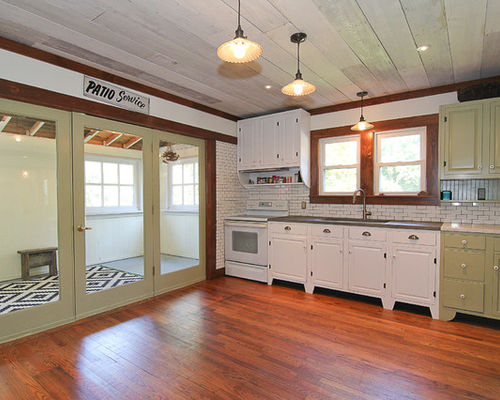
Whitewash Finish Options?
The ceiling in this farmhouse kitchen was reclaimed from a barn and whitewashed using the basic painting technique. Different products and techniques will produce different whitewash finishes, from distressed to pickled to glazed. For reclaimed material or furniture, I suggest you use a water-based paint — it’s easier to thin (just add water) and less noxious to breathe. For new materials like oak floors, I recommend using a pickling stain, because stain will absorb into the wood and won’t scuff off. Application techniques for whitewash include dry brushing, pickling, basic painting and sanding, and each has its own benefits.
- Dry brushing uses white paint without watering it down. Wipe most of the paint off the brush and paint materials very lightly. This technique is best for furniture and cabinets. It may be hard to get a continuous look on walls and ceilings.
- Pickling involves watered-down paint or a pickling stain. Pickling means to wipe the paint into the wood and then wipe the excess off. This works great on walls, floors and ceilings.
- Basic painting is great for rough surfaces like reclaimed wood shelves. For this technique, water the paint down and don’t wipe it off.
- Sanding removes some of the paint and gives a distressed finish. Thin whitewash paint will not seal or protect surfaces, so add a glaze or wood sealer for a glazed finish. A sanded finish looks great on garden furniture and cabinets.
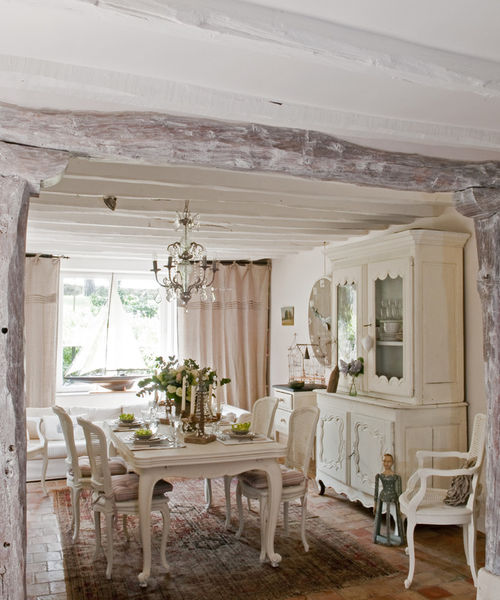
Buy Whitewash Paint Products
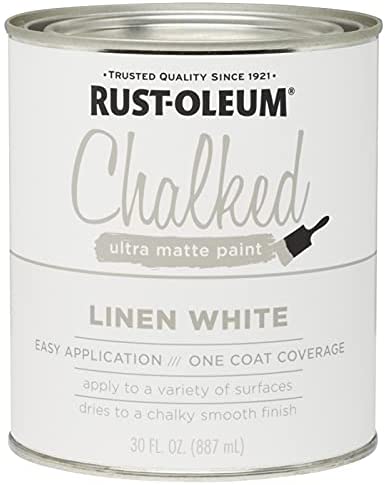
Rust-Oleum Linen White Chalked Ultra Matte Paint
Use on a variety of interior surfaces like wood, metal, ceramic, canvas and easily distress to create a vintage look
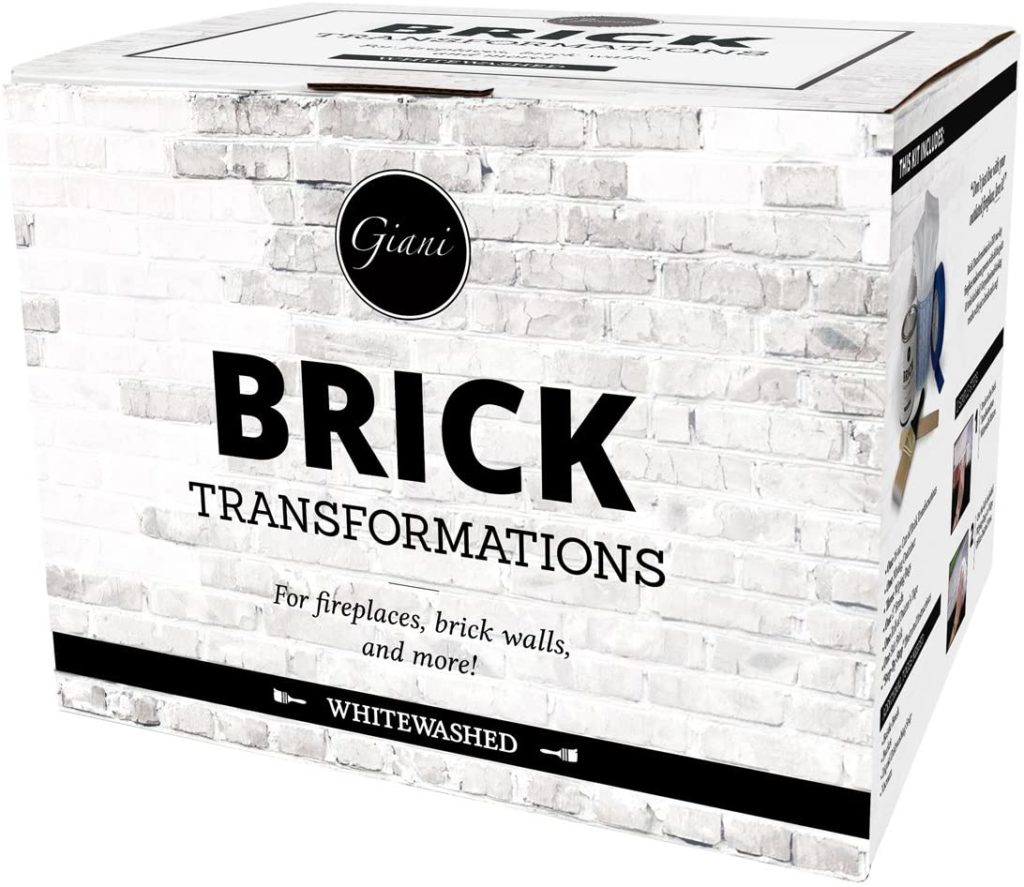
Giani Brick Transformations Kit- Whitewashed
Ideal for fireplaces, brick walls and interior accents, the kit contains everything you need to whitewash a range of brick colors.
nshoremag.com is a participant in the Amazon Services LLC Associates Program, an affiliate advertising program designed to provide a means for sites to earn advertising fees by advertising and linking to Amazon.com.

